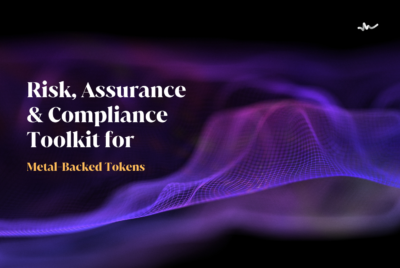Understanding Crypto-to-Fiat Payment Mechanisms
What crypto-to-fiat payment mechanisms can be used in real estate tokenization?
There are several viable options to convert cryptocurrency to fiat money when buying or selling tokenized real estate. Key mechanisms include:
Stablecoins: These are cryptocurrencies pegged to fiat currencies (like USD or AED) to minimize volatility. For example, USDT or USDC stablecoins maintain a stable value and can be used as digital cash equivalents. In practice, buyers can pay with stablecoins, and sellers receive nearly equivalent fiat value due to the price stability. Stablecoins are popular in crypto payments – in 2024 they made up 35.5% of all crypto transactions on one major platform, reflecting their growing role in real-world commerce. Using a stablecoin pegged to the local currency (e.g. a dirham-backed stablecoin in the UAE) can simplify settlement since 1 token equals 1 unit of fiat, easing conversion.
Direct Bank Integration: This refers to linking crypto transactions directly with banking systems. In this model, a payment can originate in crypto and end up in a bank account as fiat. For instance, a crypto platform might integrate with banks via APIs or payment networks (like SWIFT or instant transfer systems) so that when a buyer pays in crypto, an equivalent fiat amount is deposited to the seller’s bank account. Innovative middleware like Chainlink already enables smart contracts to trigger traditional bank payments by acting as a bridge between blockchains and bank APIs. In real estate deals, this could mean the buyer’s crypto is automatically converted and wired to the seller’s account, providing a seamless experience where the crypto’s value is realized as fiat without manual intervention.
Crypto Payment Gateways: These are services (e.g. BitPay, CoinGate, Binance Pay) that facilitate merchants accepting crypto while often instantly converting it to fiat. A gateway typically provides a point-of-sale or checkout integration – the buyer pays in their preferred cryptocurrency, and the service processes the payment and converts it into fiat, depositing the funds to the seller minus a fee. This shields the seller from crypto volatility and regulatory complexity, since they effectively receive fiat. Crypto payment processors handle the exchange and transaction flow from checkout to final settlement. In the context of real estate, a developer or broker could use a gateway to accept a buyer’s Bitcoin or Ethereum and have it automatically converted to, say, UAE dirhams or US dollars in their account. This method removes “crypto anxiety” for sellers, as they take zero price risk, and makes paying with crypto as easy as paying with a credit card.
On/Off-Ramp Solutions: On-ramps convert fiat to crypto, and off-ramps convert crypto back to fiat. These services are vital bridges between traditional finance and crypto. An on-ramp might allow a buyer to use a credit card or bank transfer to instantly buy cryptocurrency (or stablecoins) that can be used in a tokenized property purchase. An off-ramp lets a seller of a crypto-tokenized property convert the crypto proceeds into depositable cash. Many specialized fintech companies (like MoonPay, Ramp Network, or exchanges) offer compliant on/off-ramp services embedded in applications. These solutions handle KYC (Know-Your-Customer) checks, anti-fraud measures, and work with banking partners so that users can move between fiat and crypto easily. In a real estate scenario, on/off-ramps ensure that participants can enter the crypto ecosystem to make a purchase and exit back to fiat to realize their sale proceeds. As crypto adoption grows, such ramps are increasingly user-friendly, enabling even non-technical investors to participate in crypto-based property deals.
Each of these mechanisms can be employed in real estate tokenization, often in combination. For example, a buyer might use an on-ramp to acquire USDC stablecoins with which they pay a tokenized property seller; the seller uses a payment gateway or direct bank integration to off-ramp the USDC into local currency in their bank. The choice of mechanism depends on the parties’ preferences and regulatory constraints (some jurisdictions may favor stablecoin use, while others allow direct crypto payments). The common goal is to achieve a “seamless” conversion between crypto and fiat so that property transactions can settle without hiccups, regardless of the currency the buyer holds.
How are crypto payment methods evolving globally in 2024?
Crypto-to-fiat payment technology is advancing rapidly, and 2024 has seen significant global developments. A major trend is the surging use of stablecoins in payments worldwide, both for consumer and business transactions. In fact, the total transaction volume of stablecoins hit $15.6 trillion in 2024, which is about 119% of Visa’s total payment volume for the year. This astonishing figure — drawn from recent ARK Invest data — underscores how crypto payment rails are scaling. Stablecoin networks like Tether (USDT) have become so widespread that they processed more value than many traditional payment networks. This is driven by the advantages of crypto rails: near-instant settlement across borders, 24/7 operation, and lower fees.
Another notable development is the integration of crypto by mainstream financial giants. Payment networks Visa and MasterCard began enabling stablecoin settlements on their networks in 2024. This means merchants could eventually accept a stablecoin just as easily as a Visa card payment, with the card networks handling conversion behind the scenes. Such moves by incumbents lend credibility and infrastructure to crypto payments, making it easier for businesses to adopt. Likewise, PayPal introduced its own USD-backed stablecoin in 2023, signaling how fintech leaders are embracing crypto payment methods – a trend continuing into 2024 as these stablecoins start to be used in apps and e-commerce.
Institutional adoption and regulation are also evolving. The European Union’s Markets in Crypto-Assets (MiCA) regulation (passed in 2023) is coming into effect, which provides a clear legal framework for crypto payments and stablecoin issuance in all EU states. This regulatory clarity in Europe is encouraging payment providers to innovate with crypto knowing the compliance rules. In the US, while no comprehensive law is in place yet, there’s a trend of more enforcement and guidance: the SEC has continued to insist that many crypto tokens (used in payment or otherwise) are securities, pressuring exchanges and platforms to either register or restrict certain assets. This has led some US companies to focus on stablecoins (which might be regulated more like banking products) rather than volatile tokens for payments. By contrast, crypto-friendly regions like the UAE have been proactively updating laws (as discussed in Article 2) to facilitate crypto payments.
On the technology front, payment infrastructure has improved to support higher throughput. We saw Layer-2 scaling solutions gain traction. For instance, the Bitcoin Lightning Network (which enables instant Bitcoin payments with almost no fees) and Ethereum Layer-2 networks like Arbitrum or Polygon saw notable growth in usage in 2024. Lightning Network allows Bitcoin to be used more easily for everyday purchases, and indeed many more wallets and exchanges integrated Lightning this year, making BTC payments faster – a positive sign for its use in commerce. On Ethereum, Layer-2 networks have been crucial for stablecoin transactions: one report noted that Tron (a low-fee blockchain) actually overtook Ethereum and Bitcoin in payment count, carrying an enormous volume of USDT stablecoin transfers in 2024 due to its minimal fees. This reflects a broader 2024 theme: users and businesses gravitate to whatever blockchain makes payments cheapest and quickest, which has spurred competition and innovation in crypto networks.
Finally, crypto payment gateways and fintech apps have become more sophisticated. Global merchants are increasingly open to accepting crypto, especially stablecoins, as integration becomes plug-and-play. By late 2024, over 100,000 merchants worldwide were estimated to accept cryptocurrency through various processors. Some countries even reported real estate being regularly sold for crypto (as we’ll explore in Article 3). In summary, 2024’s evolution of crypto payments is marked by greater stability, higher volumes, and deeper integration with traditional finance. For real estate tokenization, this means stakeholders can be more confident that the crypto payment options they use are robust, widely accepted, and supported by emerging regulations.
How do blockchain architecture and smart contracts enable seamless crypto-fiat transactions?
Blockchain technology provides the backbone for crypto-to-fiat payments by ensuring transactions are secure, transparent, and programmable. First, consider the basic architecture: when using a cryptocurrency (like a stablecoin) to represent fiat, the blockchain serves as a ledger recording the transfer of that value. For example, if Alice pays for a tokenized property in USDC, the Ethereum blockchain will record her USDC being transferred to the seller. This on-chain record is tamper-proof and timestamped, providing clear proof of payment. Unlike bank wires that pass through intermediaries, a blockchain transaction settles directly between buyer and seller’s wallets, typically in minutes or seconds, without relying on a chain of banks. This near-real-time settlement reduces counterparty risk for big transactions like real estate.
Smart contracts are the “automation tools” on blockchains that can be programmed to handle crypto-fiat exchanges under certain conditions. They enable seamless workflows such as escrow and atomic swaps. For instance, a smart contract can be coded to hold a buyer’s crypto payment in escrow and only release it to the seller when a property title transfer is confirmed (or any other agreed condition) – effectively acting like a digital escrow agent. This can give both parties confidence: the seller knows the crypto funds are locked in the contract, and the buyer knows the payment won’t finalize until they receive the asset (the tokenized deed). Such contracts remove the need for costly intermediaries and can automatically reverse a payment if conditions aren’t met by a deadline.
Another key capability is using oracles – services that feed real-world data to blockchains – to bridge the crypto and fiat worlds. Because exchange rates fluctuate, smart contracts often rely on oracle feeds to know the current price of crypto vs fiat. For example, Chainlink or similar oracles can provide a contract with the latest USD/AED exchange rate. If a real estate deal is priced in fiat but paid in crypto, the smart contract can query an oracle at the moment of transaction to calculate exactly how much crypto equals the required fiat amount. This was demonstrated by Chainlink and OpenLaw: they showed a smart legal contract where a payment obligation in US dollars could be fulfilled with Ether by having the contract check an exchange-rate oracle and self-adjust the Ether amount to deliver the correct USD value. In practice, this means parties can agree on a fiat price for a property, but use crypto at closing without worrying about conversion losses – the contract ensures the seller gets the right fiat equivalent at the current rate.
Smart contracts also tokenize fiat currency itself, which is essentially what stablecoins are: a smart contract issues tokens that are redeemable 1:1 for a fiat currency held in reserve. This mechanism (often implemented on Ethereum, Solana, etc.) is what allows a stablecoin to maintain parity with fiat. The contract typically has functions to mint new tokens when fiat is deposited in reserve and burn tokens when someone redeems them for fiat. This transparency (often with monthly audits of reserves) builds trust that the stablecoin truly represents fiat. For example, an Emirati dirham-backed stablecoin could be implemented via a smart contract authorized by the UAE central bank – each token represents one AED in a bank – enabling digital transactions in AED on blockchain. The UAE is moving in this direction, recently approving stablecoin frameworks so that dirham-backed tokens can be issued under central bank oversight.
Finally, blockchain’s programmability means complex payment routing and compliance can be automated. If multiple parties are involved in a property deal (agents, lawyers, etc.), a smart contract can instantly split a single crypto payment to distribute each party’s share according to predefined percentages – all in one atomic transaction. It can also enforce compliance checks: for example, only accept funds from wallets that have been whitelisted (known KYC-approved addresses) or require a digital signature from a notary or regulator’s address to countersign the payment before it releases. This kind of fine-grained control is hard to achieve in traditional payments. By encoding rules directly into the payment flow, blockchains ensure that “seamless” doesn’t mean “lawless.” In summary, blockchain architecture provides the secure rails and single source of truth for transactions, while smart contracts act as the workflow engine that automates conversion, escrow, and compliance, making crypto-to-fiat payments efficient and trustworthy in real estate tokenization.
Disclaimer: This article provides general information and does not constitute legal advice. Consult with qualified legal counsel for advice specific to your situation.





